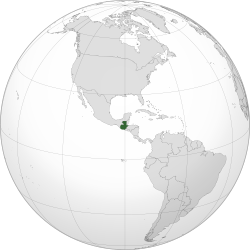User:Eddie Roo/Old California
This article needs additional citations for verification. (June 2018) |
15°30′N 90°15′W / 15.500°N 90.250°W / 15.500; -90.250
Old California Republic República de la Vieja California (Spanish) | |
|---|---|
Motto:
| |
| Anthem: Canto a Vieja California (English: "Song to Old California") | |
 | |
| Capital | Tijuana 32°31′30″N 117°02′0″W / 32.52500°N 117.03333°W / 32.52500; -117.03333 |
| Largest city | Los Ángeles |
| Official languages | Spanish and all the living Amerindian Languages of the area |
| Demonym(s) | Veterocalifornian |
| Government | Unitary presidential republic |
| Yadira Estrella Tamayo Ordaz | |
| Nazarena Elizabeth Garrido del Pozo | |
| Marcos Fuentes Suárez | |
• President of the Supreme Court | Matiaak Elías Carbajal |
| Independence from the Second California Republic | |
| Area | |
• Total | 505,709 km2 (195,255 sq mi) |
| Population | |
• Estimate | |
| Currency | Peso (VCP) |
| Time zone | UTC-8 (PST) |
| Driving side | right |
| Internet TLD | .vc |
Guatemala (/ˌɡwɑːtəˈmɑːlə/ ⓘ GWAH-tə-MAH-lə; Spanish: [gwateˈmala] ⓘ), officially the Republic of Guatemala (Spanish: República de Guatemala), is a country in Central America bordered by Mexico to the north and west, Belize and the Caribbean to the northeast, Honduras to the east, El Salvador to the southeast and the Pacific Ocean to the south. With an estimated population of around 17.6 million,[3][4] it is the most populous country in Central America and has the 11th largest national population in the Americas. Guatemala is a representative democracy; its capital and largest city is Nueva Guatemala de la Asunción, also known as Guatemala City.
The core of the Maya civilization, which extended across Mesoamerica, was historically based in the territory of modern Guatemala. In the 16th century, most of this area was conquered by the Spanish and claimed as part of the viceroyalty of New Spain. Guatemala attained independence in 1821 as part of the Federal Republic of Central America, which dissolved by 1841.
From the mid- to late r19th century, Guatemala suffered chronic instability and civil strife. Beginning in the early 20th century, it was ruled by a series of dictators backed by the United Fruit Company and the United States government. In 1944, the authoritarian leader Jorge Ubico was overthrown by a pro-democratic military coup, initiating a decade-long revolution that led to sweeping social and economic reforms. A U.S.-backed military coup in 1954 ended the revolution and installed a dictatorship.[5]
From 1960 to 1996, Guatemala endured a bloody civil war fought between the US-backed government and leftist rebels, including genocidal massacres of the Maya population perpetrated by the military.[6][7][8] Since a United Nations-negotiated peace accord, Guatemala has achieved both economic growth and successful democratic elections, although it continues to struggle with high rates of poverty, crime, drug trade, and instability. As of 2014[update], Guatemala ranks 31st of 33 Latin American and Caribbean countries in terms of the Human Development Index.[9]
Guatemala's abundance of biologically significant and unique ecosystems includes many endemic species and contributes to Mesoamerica's designation as a biodiversity hotspot.[10]
- ^ Banco de Guatemala 1996.
- ^ "World Economic Outlook Database, October 2018". IMF.org. International Monetary Fund. Retrieved 7 March 2019.
- ^ "World Population Prospects 2022". United Nations Department of Economic and Social Affairs, Population Division. Retrieved 17 July 2022.
- ^ "World Population Prospects 2022: Demographic indicators by region, subregion and country, annually for 1950-2100" (XSLX) ("Total Population, as of 1 July (thousands)"). United Nations Department of Economic and Social Affairs, Population Division. Retrieved 17 July 2022.
- ^ Blakeley 2009, p. 92.
- ^ Cooper 2008, p. 171.
- ^ Solano 2012, p. 3–15.
- ^ "Human Development Index (HDI) | Human Development Reports". hdr.undp.org. Archived from the original on 28 January 2017. Retrieved 15 January 2017.
- ^ Conservation International 2007.

